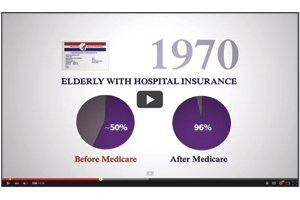 The Story of Medicare: A Timeline
Video
The Story of Medicare: A Timeline
Video
Written and produced by Foundation staff, The Story of Medicare: A Timeline serves as a visual timeline of Medicare’s history, including the debate that led to its creation in 1965 and subsequent changes, such as the passage and repeal of the Medicare Catastrophic Coverage Act in the 1980s, the Medicare Modernization Act in 2003, and the Affordable Care Act.